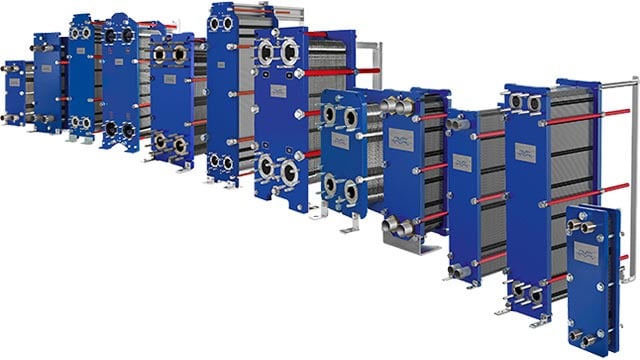Cement emissions are turned into valuable feedstock in large-scale carbon capture project
Decarbonizing cement industries through Carbon Capture and Utilization (CCU) with advanced heat transfer technology: the carbon capture is estimated to save over 70,000 tonnes of CO2 from the cement production yearly. With the ambition to be carbon neutral by 2050, Heidelberg Materials has many upcoming decarbonization projects for their plants, taking the lead in the industry.
DATE 2025-03-10Circular actions in hard-to-abate sectors
Roughly 7% of global carbon emissions come from cement production. At least two-thirds of these emissions are unavoidable, as CO2 is released during the calcination of limestone – a key step in producing cement clinkers. That said, there are ways to decarbonize the sector, one of them being carbon capture which collects and stores the CO2 before it escapes into the atmosphere.
For many companies in the heavy industrial sector, improving the environmental performance of their operations is a priority. Linde Engineering and Heidelberg Materials are building a large-scale plant for carbon repurposing to support these companies in their transformation.
The plant for carbon capture and utilization (CCU) will capture the CO2 as a by-product of the cement production, thereby preventing the CO2 from being emitted into the environment and repurpose it for the chemicals and food & beverage end markets.
By-product is made beneficial
The CO2 will be transferred from the cement plant to the CCU plant. This by-product of cement production is raw, low concentration CO2, containing various other molecules. In order to make use of it, the raw CO2 must first be purified.
After purification, the gas will be condensed and compressed to liquid form for efficient storage in on-site bulk storage tanks comprising part of a tank farm. By converting gaseous CO2 into its liquid form, it becomes a transportable and versatile resource.
The CCU process is a technically complex puzzle that demands precise integration, intricate engineering, and significant energy input. It requires advanced heat transfer technology – all the way from capturing the CO2 to liquefaction. This is Alfa Laval’s part in the project. Our gasketed plate heat exchangers are used for capturing, and our semi-welded units are installed in the liquefaction process.
OASE® blue post-combustion CO2 capture (PCC) process
A one-stop shop for CCU
Alfa Laval gasketed plate heat exchangers take up below critical positions in the plant’s carbon capture process and many more:
- Rich/Lean solution
- CO2 and amine reboiler
- Lean solvent cooler
- Absorber wash water
- Absorber interstage cooler
For the liquefaction process, semi-welded heat exchangers were the right fit due to their improved fatigue resistance. They allow higher pressure and temperatures compared to fully gasketed heat exchangers, making them optimal for liquefaction duty. Furthermore, Alfa Laval’s semi-welded heat exchangers have a compact design, leaving a smaller footprint and ensuring higher heat transfer efficiency.
Thanks to Alfa Laval’s broad portfolio of heat transfer technology, we could cover the full scope of the CCU application.
Powering a green transformation on both fronts
The carbon capture is estimated to save over 70,000 tonnes of CO2 from the cement production yearly. The majority of the liquified CO2 will be supplied to other end-customers as feedstock for chemicals, food, and beverage markets, meeting the sector’s high demand for circular CO2.
With the ambition to be carbon neutral by 2050, Heidelberg Materials has many upcoming decarbonization projects for their plants, taking the lead in the industry.



